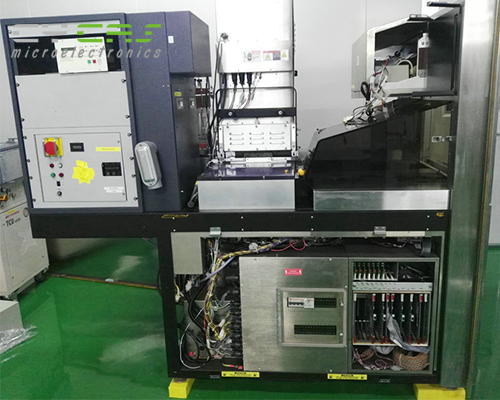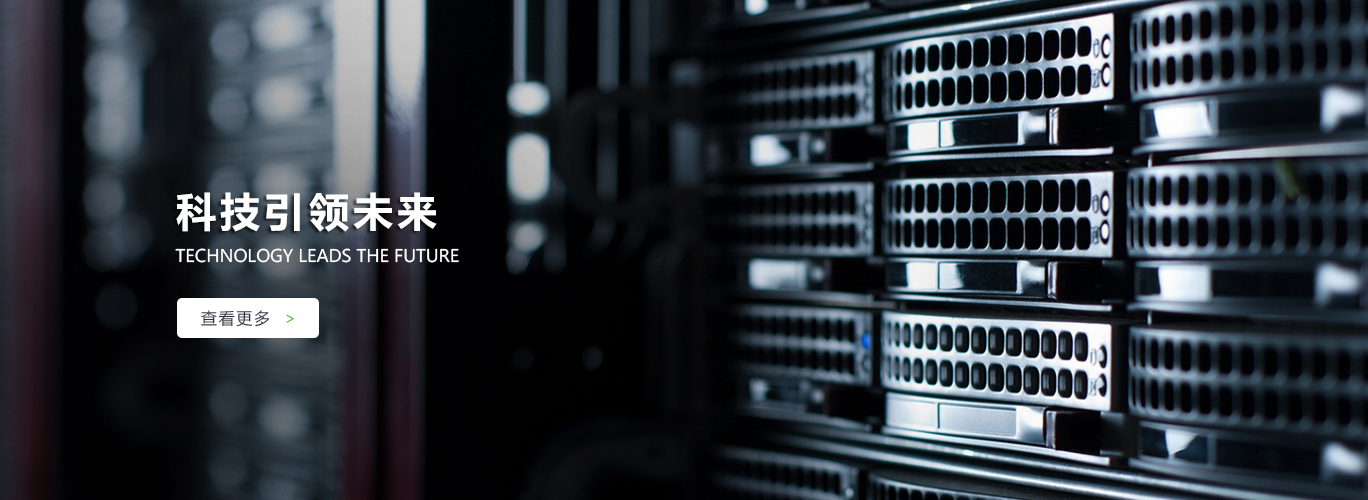新闻资讯
联系我们
名 称:苏州赛森电子科技有限公司
电 话:0512-58987901
传 真:0512-58987201
邮 箱:sales@cycas.com
地 址:江苏省张家港经济开发区福新路1202号 215600PRC
网 址:www.cycas.com
Name: Suzhou cycas Microelectronics Co., Ltd.
Tel.: 0512-58987901
Fax: 0512-58987201
Email: sales@cycas.com
Address: No.1202,Fuxin Road,Zhangjiagang Economic Development Zone,Jiangsu Province 215600PRC
Website: www.cycas.com
刻蚀的具体过程可描述为如下六个步骤The specific etching process can be described as the following six steps
刻蚀的具体过程可描述为如下六个步骤The specific etching process can be described as the following six steps
发布日期:2018-01-04 作者:www.cycas.com 点击:
众所周知,在芯片制造的过程中,硅片表面图形的形成主要依靠光刻和刻蚀两大模块。光刻的目的是在硅片表面形成所需的光刻胶图形,刻蚀则紧接其后精确地将光刻胶的图形转移到衬底或衬底上的薄膜层上。随着特征尺寸要求越来越小,对光刻和刻蚀的要求也越来越高。通常一个刻蚀工艺包含以下特性:
良好的刻蚀速率均匀性(Uniformity),不仅仅是片内的均匀性(Within Wafer),还包括片与片之间(Wafer to Wafer),批次与批次之间(Lot to Lot)。
高选择比(High Selectivity),被刻蚀材料的刻蚀速率远大于光刻胶和衬底的损失率。
无残留(Residue Free),刻蚀过程中不应生成不挥发的、难以去除的刻蚀副产品和微粒。
无损伤(Damage Free),即在刻蚀过程中不应产生任何对衬底、薄膜以及器件的电损伤或等离子损伤。
不会使光刻胶在刻蚀完成后难以去除。
可控的良好的侧壁形貌(Side Profile)。
良好的特征尺寸(Critical Dimension)控制
刻蚀速率(Etching Rate),保证流片量。

等离子体干法刻蚀通常有三种形式:等离子体刻蚀、离子轰击和两种形式的结合反应离子刻蚀(Reactive Ion Etching),下表给出三种刻蚀的特点对照。
离子轰击顾名思义是利用高能量惰性气体离子轰击硅片表面,达到溅射刻蚀的作用。因为采用这种方法所以可以得到非常小的特征尺寸和垂直的侧壁形貌。这是一种“通用"的刻蚀方式,可以在任何材料上形成图形,如钛、金等,可惜离子轰击有其致命弱点:刻蚀速率低下同时选择性比较差,能达到3:1以属罕见。
等离子体刻蚀的优势不仅在于快速的刻蚀速率同时可获得良好的物理形貌,还可以通过对反应气体的选择达到针对光刻胶和衬底的高选择比。但是因为整个过程完全是化学反应所以对材料的刻蚀是各向同性的,随着工艺尺寸的持续缩小,这一缺点愈显突出,使它的应用越来越越受到限制,一般仅用于对特征形貌没有要求的去胶(Ashing)工艺。
反应离子刻蚀是上述两种刻蚀方法相结合的产物,它是利用有化学反应性气体产生具有化学活性的基团和离子。经过电场加速的高能离子轰击被刻蚀材料,产生损伤的表面,这进一步加速了活性刻蚀反应基团与被刻蚀材料的反应速率,正是这种化学和物理反应的相互促进使得反应离子刻蚀具有上述两种干法刻蚀所没有的优越性:良好的形貌控制能力(各向异性);较高的选择比;可以接受的刻速率。正是它的这些优越性使得它成为目前应用范围最为广泛的干法刻蚀,所以现在我们提到的干法刻蚀一般都是指反应离子刻蚀。
当刻蚀气体被通入刻蚀反应腔中,在射频电场的作用下产生等离子体辉光放电,反应气体分解成各种中性的化学活性基团,分子、电子、离子;由于电子和离子的质量不同使得质量较轻的电子能够响应射频电场的变化而离子却不能,正是这种差异在电极上产生负偏压 Vdc(Negative DC bias) ,离子在负偏压的加速下轰击硅片表面形成反应离子刻蚀;一个持续的干法刻蚀必须要满足这些条件:在反应腔内有源源不断的自由基团;硅片必须靠等离子体足够近以便反应基团可以扩散到其表面;反应物应被硅片表面吸附以持续化学反应;挥发性的生成物应可从硅片表面解吸附并被抽出反应腔。上面的任一种条件末达到刻蚀过程都会中断。等离子刻蚀机刻蚀的具体过程可描述为如下六个步骤:
1. 刻蚀物质的产生;
射频电源施加在一个充满刻蚀 气体的反应腔上,通过等离子体辉光放电产生电子、离子、活性反应基团。
2. 刻蚀物质向硅片表面扩散;
3. 刻蚀物质吸附在硅片表面上;
4. 在离子轰击下刻蚀物质和硅片表面被刻蚀材料发生反应;
5. 刻蚀反应副产物在离子轰击下解吸附离开硅片表面;
6. 挥发性刻蚀副产物和其它未参加反应的物质被真空泵抽出反应腔;
整个过程中有诸多的参数影响刻蚀工艺,其中最重要的是:压力、气体比率、气体流速、射频电源(RF POWER)。另外硅片的位置和刻蚀设备的结构也会对刻蚀工艺,因此在实际生产中,针对不同的刻蚀膜质设备厂家设计不同的设备,提供不同的气体配比以达到工艺要求
As we all know, in the process of chip manufacturing, the formation of silicon surface pattern mainly depends on two modules: lithography and etching. The aim of lithography is to form the pattern of photoresist on the surface of silicon wafer, and then the pattern of photoresist is transferred to the substrate or the film layer on the substrate. With the requirement of feature size becoming smaller and smaller, the requirement of lithography and etching is also higher and higher. Generally, an etching process includes the following characteristics:
good uniformity of etching rate, not only within wafer, but also between wafer to wafer, lot to lot.
With high selectivity, the etching rate of etched material is much higher than that of photoresist and substrate.
There is no residual free, and non-volatile and difficult to remove etching by-products and particles should not be generated in the etching process.
No damage (damage free), that is, there should be no electrical damage or plasma damage to the substrate, film and device during the etching process. It will not make photoresist difficult to remove after etching.
Controllable and good side profile. A good critical dimension controls the etching rate and ensures the amount of chips. There are generally three forms of plasma dry etching: plasma etching, ion bombardment and two forms of reactive ion etching. The following table shows the characteristics of three kinds of etching. As the name implies, ion bombardment is to bombard the surface of silicon wafer with high-energy inert gas ions to achieve the effect of sputtering and etching. Because of this method, very small feature size and vertical side wall morphology can be obtained. This is a "universal" etching method, which can form patterns on any material, such as titanium, gold, etc. unfortunately, ion bombardment has its fatal weakness: low etching rate and poor selectivity, which can reach 3:1 is rare.
The advantages of plasma etching are not only the fast etching rate and good physical morphology, but also the high selection ratio for photoresist and substrate through the selection of reactive gas. But because the whole process is completely chemical reaction, the etching of the material is isotropic. With the continuous reduction of the process size, this disadvantage becomes more and more prominent, which makes its application more and more limited. Generally, it is only used in the Ashing process which does not require the characteristic morphology.
Reactive ion etching is the product of the combination of the above two etching methods. It uses chemically reactive gases to produce chemically active groups and ions. The high energy ions accelerated by electric field bombard the etched material and produce the damaged surface, which further accelerates the reaction rate between the reactive etching reaction group and the etched material. It is the mutual promotion of chemical and physical reactions that makes the reactive ion etching have the advantages that the above two dry etching methods do not have: good morphology control ability (anisotropy); high selection The acceptable rate of engraving. Because of its advantages, it has become the most widely used dry etching at present, so the dry etching we mentioned now generally refers to reactive ion etching.
When the etching gas is introduced into the etching reaction chamber, a plasma glow discharge is generated under the action of RF electric field, and the reaction gas is decomposed into various neutral chemical active groups, molecules, electrons and ions; because of the different mass of electrons and ions, the lighter electrons can respond to the change of RF electric field, while the ions cannot, which is the difference that produces negative bias on the electrode Voltage VDC (negative DC bias) Under the acceleration of negative bias voltage, ions bombard the surface of silicon wafer to form reactive ion etching; a continuous dry etching must meet these conditions: there are continuous free groups in the reaction chamber; silicon wafer must be close enough to the plasma so that the reactive groups can diffuse to its surface; reactants should be adsorbed on the surface of silicon wafer for continuous chemical reaction; volatile products should be able to Desorption from the wafer surface and extraction of the reaction chamber. Any of the above conditions will interrupt the etching process.
The specific process of plasma etching can be described as follows:
The generation of etching materials; RF power supply is applied to a reaction chamber full of etching gas, through the glow discharge of plasma to produce electrons, ions, active reaction groups.
The etching substance diffuses to the surface of silicon wafer;
The etching substance is adsorbed on the surface of silicon wafer;
The etching substance reacts with the etched material on the surface of silicon wafer under the ion bombardment;
The by-product of etching reaction is desorbed from the surface of silicon wafer under the ion bombardment;
The volatile etching byproducts and other substances not involved in the reaction are pumped out of the reaction chamber by vacuum pump; there are many parameters affecting the etching process in the whole process, the most important of which are: pressure, gas ratio, gas flow rate, RF power. In addition, the location of silicon wafer and the structure of etching equipment will also affect the etching process. Therefore, in actual production, different equipment and gas ratio are designed for different etching film equipment manufacturers to meet the process requirements
本文网址:http://www.cycas.com/news/366.html
相关标签:干法去胶机
最近浏览:
相关产品:
相关新闻:
- 蚀刻机腐蚀加工蚀刻网片的工艺流程Process flow of etching mesh by etching machine
- 干法去胶工艺原理及使用?Principle and application of dry degumming process?
- PVD沉积方式的比较Comparison of PVD deposition methods
- Factors affecting the degreasing of alkaline solution before etching the label of etching machine蚀刻机蚀刻标牌之前影响碱液除油的的因素
- 蚀刻机腐蚀加工蚀刻网片的工艺流程Process flow of etching mesh by etching machine
- Microwave plasma dry degumming machine operation and personnel微波等离子干法去胶机操作及配合人员防护:
- 等离子体干法去胶机工艺原理及使用Application of plasma dry Resist Asher
- 等离子干法去胶机反应机理:Reaction mechanism of plasma dry degumming machine:
- 微波等离子干法去胶机影响因素:Influencing factors of microwave plasma dry degumming machine:
- 教您如何为金属蚀刻机调配油墨!Teach you how to mix ink for metal etching machine!

